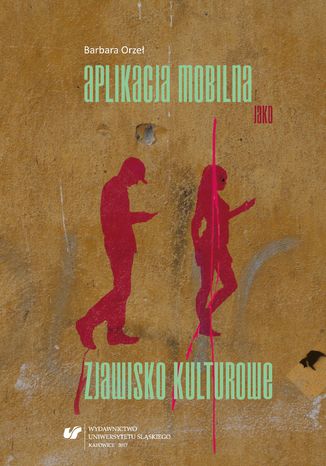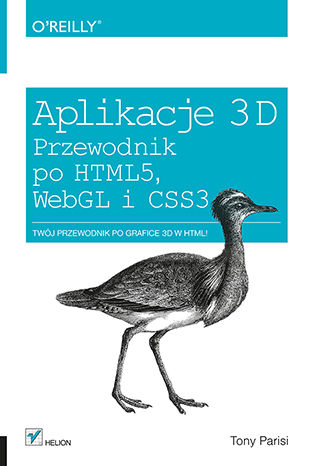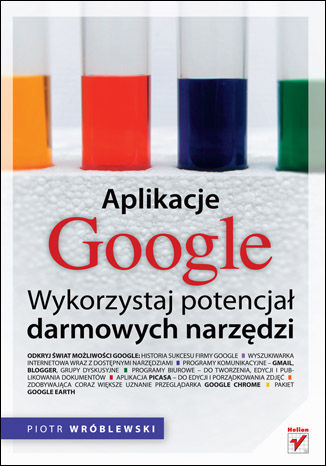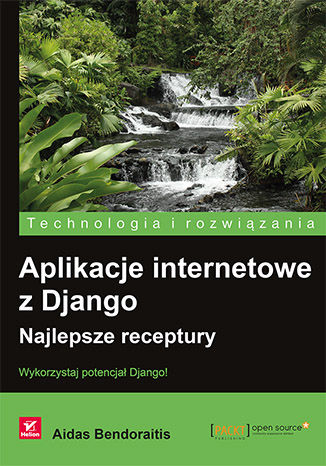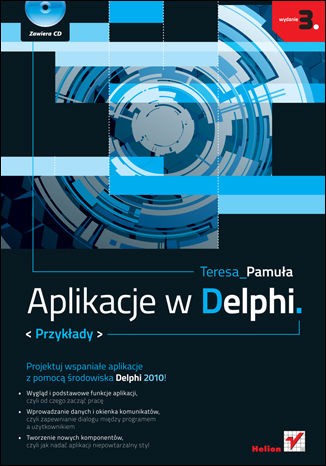Kategorie
-
- Bitcoin
- Bizneswoman
- Coaching
- Controlling
- E-biznes
- Ekonomia
- Finanse
- Giełda i inwestycje
- Kompetencje osobiste
- Komputer w biurze
- Komunikacja i negocjacje
- Mała firma
- Marketing
- Motywacja
- Multimedialne szkolenia
- Nieruchomości
- Perswazja i NLP
- Podatki
- Polityka społeczna
- Poradniki
- Prezentacje
- Przywództwo
- Public Relation
- Raporty, analizy
- Sekret
- Social Media
- Sprzedaż
- Start-up
- Twoja kariera
- Zarządzanie
- Zarządzanie projektami
- Zasoby ludzkie (HR)
-
- Architektura i wnętrza
- BHP
- Biznes i Ekonomia
- Dom i ogród
- E-Biznes
- Ekonomia i finanse
- Ezoteryka
- Finanse
- Finanse osobiste
- Firma
- Fotografia
- Informatyka
- Kadry i płace
- Kobieca
- Komputery, Excel
- Księgowość
- Kultura i literatura
- Naukowe i akademickie
- Ochrona środowiska
- Opiniotwórcze
- Oświata
- Podatki
- Podróże
- Psychologia
- Religia
- Rolnictwo
- Rynek książki i prasy
- Transport i Spedycja
- Zdrowie i uroda
-
- Aplikacje biurowe
- Bazy danych
- Bioinformatyka
- Biznes IT
- CAD/CAM
- Digital Lifestyle
- DTP
- Elektronika
- Fotografia cyfrowa
- Grafika komputerowa
- Gry
- Hacking
- Hardware
- IT w ekonomii
- Pakiety naukowe
- Podręczniki szkolne
- Podstawy komputera
- Programowanie
- Programowanie mobilne
- Serwery internetowe
- Sieci komputerowe
- Start-up
- Systemy operacyjne
- Sztuczna inteligencja
- Technologia dla dzieci
- Webmasterstwo
-
- Antologie
- Ballada
- Biografie i autobiografie
- Dla dorosłych
- Dramat
- Dzienniki, pamiętniki, listy
- Epos, epopeja
- Esej
- Fantastyka i science-fiction
- Felietony
- Fikcja
- Humor, satyra
- Inne
- Klasyczna
- Kryminał
- Literatura faktu
- Literatura piękna
- Mity i legendy
- Nobliści
- Nowele
- Obyczajowa
- Okultyzm i magia
- Opowiadania
- Pamiętniki
- Podróże
- Poemat
- Poezja
- Polityka
- Popularnonaukowa
- Powieść
- Powieść historyczna
- Proza
- Przygodowa
- Publicystyka
- Reportaż
- Romans i literatura obyczajowa
- Sensacja
- Thriller, Horror
- Wywiady i wspomnienia
-
- Archeologia
- Bibliotekoznawstwo
- Filmoznawstwo
- Filologia
- Filologia polska
- Filozofia
- Finanse i bankowość
- Geografia
- Gospodarka
- Handel. Gospodarka światowa
- Historia i archeologia
- Historia sztuki i architektury
- Kulturoznawstwo
- Lingwistyka
- Literaturoznawstwo
- Logistyka
- Matematyka
- Medycyna
- Nauki humanistyczne
- Pedagogika
- Pomoce naukowe
- Popularnonaukowa
- Pozostałe
- Psychologia
- Socjologia
- Teatrologia
- Teologia
- Teorie i nauki ekonomiczne
- Transport i spedycja
- Wychowanie fizyczne
- Zarządzanie i marketing
-
- BHP
- Historia
- Kodeks drogowy. Prawo jazdy
- Nauki prawne
- Ochrona zdrowia
- Ogólne, kompendium wiedzy
- Podręczniki akademickie
- Pozostałe
- Prawo budowlane i lokalowe
- Prawo cywilne
- Prawo finansowe
- Prawo gospodarcze
- Prawo gospodarcze i handlowe
- Prawo karne
- Prawo karne. Przestępstwa karne. Kryminologia
- Prawo międzynarodowe
- Prawo międzynarodowe i zagraniczne
- Prawo ochrony zdrowia
- Prawo oświatowe
- Prawo podatkowe
- Prawo pracy i ubezpieczeń społecznych
- Prawo publiczne, konstytucyjne i administracyjne
- Prawo rodzinne i opiekuńcze
- Prawo rolne
- Prawo socjalne, prawo pracy
- Prawo Unii Europejskiej
- Przemysł
- Rolne i ochrona środowiska
- Słowniki i encyklopedie
- Zamówienia publiczne
- Zarządzanie
-
- Afryka
- Albumy
- Ameryka Południowa
- Ameryka Środkowa i Północna
- Australia, Nowa Zelandia, Oceania
- Austria
- Azja
- Bałkany
- Bliski Wschód
- Bułgaria
- Chiny
- Chorwacja
- Czechy
- Dania
- Egipt
- Estonia
- Europa
- Francja
- Góry
- Grecja
- Hiszpania
- Holandia
- Islandia
- Litwa
- Łotwa
- Mapy, Plany miast, Atlasy
- Miniprzewodniki
- Niemcy
- Norwegia
- Podróże aktywne
- Polska
- Portugalia
- Pozostałe
- Przewodniki po hotelach i restauracjach
- Rosja
- Rumunia
- Słowacja
- Słowenia
- Szwajcaria
- Szwecja
- Świat
- Turcja
- Ukraina
- Węgry
- Wielka Brytania
- Włochy
-
- Filozofie życiowe
- Kompetencje psychospołeczne
- Komunikacja międzyludzka
- Mindfulness
- Ogólne
- Perswazja i NLP
- Psychologia akademicka
- Psychologia duszy i umysłu
- Psychologia pracy
- Relacje i związki
- Rodzicielstwo i psychologia dziecka
- Rozwiązywanie problemów
- Rozwój intelektualny
- Sekret
- Seksualność
- Uwodzenie
- Wygląd i wizerunek
- Życiowe filozofie
-
- Bitcoin
- Bizneswoman
- Coaching
- Controlling
- E-biznes
- Ekonomia
- Finanse
- Giełda i inwestycje
- Kompetencje osobiste
- Komunikacja i negocjacje
- Mała firma
- Marketing
- Motywacja
- Nieruchomości
- Perswazja i NLP
- Podatki
- Polityka społeczna
- Poradniki
- Prezentacje
- Przywództwo
- Public Relation
- Sekret
- Social Media
- Sprzedaż
- Start-up
- Twoja kariera
- Zarządzanie
- Zarządzanie projektami
- Zasoby ludzkie (HR)
-
- Antologie
- Ballada
- Biografie i autobiografie
- Dla dorosłych
- Dramat
- Dzienniki, pamiętniki, listy
- Epos, epopeja
- Esej
- Fantastyka i science-fiction
- Felietony
- Fikcja
- Humor, satyra
- Inne
- Klasyczna
- Kryminał
- Literatura faktu
- Literatura piękna
- Mity i legendy
- Nobliści
- Nowele
- Obyczajowa
- Okultyzm i magia
- Opowiadania
- Pamiętniki
- Podróże
- Poezja
- Polityka
- Popularnonaukowa
- Powieść
- Powieść historyczna
- Proza
- Przygodowa
- Publicystyka
- Reportaż
- Romans i literatura obyczajowa
- Sensacja
- Thriller, Horror
- Wywiady i wspomnienia
-
- Filozofie życiowe
- Komunikacja międzyludzka
- Mindfulness
- Ogólne
- Perswazja i NLP
- Psychologia akademicka
- Psychologia duszy i umysłu
- Psychologia pracy
- Relacje i związki
- Rodzicielstwo i psychologia dziecka
- Rozwiązywanie problemów
- Rozwój intelektualny
- Sekret
- Seksualność
- Uwodzenie
- Wygląd i wizerunek
- Życiowe filozofie
Thriller, slasher i kryminał w jednym. Budzi grozę i zaskakuje. Na rynku pojawia się nowa aplikacja służąca do czatowania z przyjaciółmi, a licealiści z miasteczka Honesdale ochoczo zabierają się do jej testowania. Przyjaciółki Hannah i Amber również pobierają nową apkę i zaczynają konwersację. Zaczepiają także wbudowanego w program bota, który podobno ma zwyczaj podawania dziwnych odpowiedzi Friend-Bot rzeczywiście nie odpowiada na pytania jak typowy przedstawiciel AI niepokojąco łatwo daje się wciągnąć w rozmowę na temat potencjalnego morderstwa Niedługo później miasto obiega zatrważająca informacja znaleziono ciało, które prawdopodobnie należało do Hannah, a Amber uznano za zaginioną. Ambitna dziennikarka Ellen chce za wszelką cenę znaleźć mordercę. Tymczasem rówieśnicy ofiar w kółko zadają sobie pytania: Kto zabił Hannah? Czy jestem w gronie podejrzanych? Czy mordercą może być bot?
Aplikacja mobilna jako zjawisko kulturowe
Książka Aplikacja mobilna jako zjawisko kulturowe skierowana jest do wszystkich użytkowników nowych mediów. Stanowi przewodnik po kulturowych fundamentach zagadnień związanych z informatyką, kreacją programów komputerowych oraz szeroko pojętym nowomedialnym biznesem. Opisuje najważniejsze pojęcia związane z aplikacjami mobilnymi: algorytmem, interfejsem, personalizacją oraz kreacją nowych zachowań komunikacyjnych. Autorka rozpoczyna swoje rozważania przywołaniem najważniejszych pojęć dotyczących programu komputerowego oraz prezentacji jego historii. Ważną część monografii zajmują refleksje nad kulturowymi aspektami programowania – pojęciem algorytmu oraz recepcją języków programowania w świetle hipotezy Sapira-Whorfa. W kolejnych rozdziałach analizie poddano kwestie interfejsu (cross-platformowości, tzw. „strategii trzech ekranów”), konsumpcji nowych mediów mobilnych, gier komputerowych (problem przejścia od konsoli do kanału mobilnego) oraz zagadnienie personalizacji i kastomizacji doświadczenia użytkownika. W ostatniej części książki zaprezentowano nowe zachowania komunikacyjne, które powstały w związku z wprowadzeniem aplikacji do różnych dziedzin życia (e-czytelnictwo, inteligentne domy). Podjęte w monografii problemy kierują dyskurs w stronę zmian w kulturowej percepcji aplikacji mobilnych, transformacji pojęć oraz możliwych kierunków zapośredniczonych przez nie przemian.
Aplikacje 3D. Przewodnik po HTML5, WebGL i CSS3
Twój przewodnik po grafice 3D w HTML! Do niedawna wywietlanie zaawansowanej grafiki 3D w przeglądarce internetowej wymagało zainstalowania dodatkowych wtyczek oraz poznawania nowych narzędzi. Dzięki HTML5 i WebGL te czasy powoli odchodzą w niepamięć! Teraz możesz wykorzystać niesamowite możliwoci tego duetu, by zaskoczyć użytkowników atrakcyjnymi efektami 3D! Ta wyjątkowa książka została w całoci powięcona włanie zagadnieniom związanym z grafiką 3D w przeglądarce internetowej. Sięgnij po nią i przekonaj się, jak wykorzystać API WebGL do renderowania trójwymiarowej grafiki w czasie rzeczywistym. W kolejnych rozdziałach poznasz bibliotekę języka JavaScript Three.js, która w znaczący sposób ułatwia życie programisty. Informacje zawarte w dalszych rozdziałach pozwolą Ci skorzystać z zaawansowanych efektów w CSS3 i tworzyć animacje trójwymiarowe. Zaznajomisz się też z detalami tworzenia aplikacji dla urządzeń mobilnych. Twoją uwagę z pewnocią przykuje przegląd narzędzi do tworzenia trójwymiarowych modeli i animacji zarówno tych klasycznych, jak i tych online. Książka ta jest doskonałą lekturą dla wszystkich deweloperów chcących wzbogacić swój warsztat o elementy grafiki 3D. Dzięki tej książce: zapoznasz się z podstawami teorii dla grafiki 3D poznasz API WebGL wykorzystasz bibliotekę Three.js w codziennej pracy odkryjesz narzędzia przydatne w codziennej pracy jeszcze bardziej uatrakcyjnisz Twoją stronę Poznaj potencjał HTML5 w zakresie grafiki 3D! "Tony Parisi od samego początku wiedzie prym w dziedzinie rewolucyjnych rozwiązań pozwalających zagościć interaktywnym aplikacjom trójwymiarowym w internecie. Jego nowa książka zawiera dogłębne informacje na temat tych technologii oraz tworzenia najnowocześniejszych trójwymiarowych aplikacji naprawdę działających w aktualnie dostępnych przeglądarkach". - Neil Trevett, wiceprezes ds. treści mobilnej w firmie NVIDIA i prezes organizacji Khronos Group
Google, czyli współczesny świat Konkretnie - świat wirtualny. Wyszukiwarka pod adresem google.com wystartowała w roku 1997. Osiągnęła spektakularny sukces, ponieważ jej twórcy zaprojektowali algorytm, który pozwolił nie tylko wyszukiwać strony www zawierające poszukiwane przez użytkownika treści, ale także sam je selekcjonował. Od najbardziej do najmniej wartościowych. Oczywiście - "zdaniem" algorytmu, ale i tak faktem jest, że Google ułatwił życie osobom korzystającym z internetu w celu odnalezienia konkretnych informacji. A że liczba stron i bitów danych, jakie zawiera sieć stale rośnie, to i popularność wyszukiwarki google.com staje się większa i większa. Inne wyszukiwarki mogą jedynie "pomarzyć" o takim statusie - np. w Polsce aż 97% bywalców internetu korzysta z Google. Jednak uniwersum firmy Google to o wiele więcej, niż tylko maszyna do selekcjonowania danych z sieci. Firma zawiadująca marką stale pracuje nad tym, by dostarczyć klientom nowych, co ciekawe - najczęściej nieodpłatnych narzędzi, ułatwiających funkcjonowanie w obecnym, coraz mocniej "wirtualnym" świecie. I tak, Google na dziś to m.in.: Tłumacz, pozwalający zrozumieć teksty i słowa w kilkudziesięciu językach Mapy, dzięki którym nie zgubimy się w żadnym niemal kraju świata Bardzo przyjazna w użytkowaniu poczta Gmail Konto i dysk Google, gdzie można bezpiecznie zapisywać zdjęcia i inne pliki Z oferty Google korzystać można za pośrednictwem komputera i telefonu. Jest on zatem z nami właściwie wszędzie - gdziekolwiek się udamy. Wszędzie i zawsze gotów jest służyć nam pomocą. O ile oczywiście poznamy jego aplikacje i nauczymy się ich używać. Najszybciej i najskuteczniej - dzięki tej książce, napisanej prostym, przystępnym językiem, bez informatycznej nowomowy i nadmiaru niepotrzebnych informacji. Właściwa selekcja danych - to podstawa!
Aplikacje Google. Wykorzystaj potencjał darmowych narzędzi
Odkryj świat możliwości Google Historia sukcesu firmy Google Wyszukiwarka internetowa wraz z dostępnymi narzędziami Programy komunikacyjne — Gmail, Blogger, grupy dyskusyjne Programy biurowe — do tworzenia, edycji i publikowania dokumentów Aplikacja Picasa — do edycji i porządkowania zdjęć Zdobywająca coraz większe uznanie przeglądarka Google Chrome Pakiet Google Earth Wyobraź sobie, że siadasz z kubkiem kawy przed nowym laptopem, firmowanym znakiem zgodności z technologią Google. Uruchamia się system operacyjny, podpisany "Google OS". Otwierasz przeglądarkę Google Chrome, sprawdzasz pocztę Gmail. Dostajesz instrukcje, jak zmodyfikować arkusz kalkulacyjny, wchodzisz więc na Google Docs i nanosisz zmiany. W wolnej chwili przeglądasz zdjęcia od znajomej, która zamieściła je w internetowym albumie Google Picasa. Za dużo Google? Sprawdź, może w lodówce sytuacja wygląda inaczej. Wszystko zaczęło się od wyszukiwarki internetowej, stworzonej przez dwóch zapaleńców. Konkurencyjnej wyszukiwarki. Dzięki innowacyjności oraz doskonałej jakości zdobyła ona dominującą pozycję na rynku, pokonując produkty znanych firm. I to właśnie z tym świeżym podejściem powinno kojarzyć Ci się Google. Przełomowa poczta — Gmail, a także dokumenty online to efekt pracy rzeszy pracowników firmy o otwartych i kreatywnych umysłach, nie tłamszonych sztywnymi regułami koncernów. Dziś laboratoria Google wymyślają nowe usługi, eksplorują następne regiony. Kolejne produkty Google są wygodne, szybkie i po prostu ułatwiają pracę. Oswajaj się więc z wszechobecną nazwą tej firmy, poznaj jej produkty i za darmo korzystaj z ich niezwykłego potencjału! Dlaczego internauci wybrali Google? Jak stawiać pierwsze kroki w Google i nie poślizgnąć się? Czym jest wyszukiwanie wyspecjalizowane i "inteligentne"? Jak odkryć świat blogerów? Na co odpowiada Google Answers? Z czym jeść nowości z kuchni Google Labs? Czym jest konto Google? Dlaczego wszyscy chcą mieć konto Gmail? Jak stworzyć album zdjęciowy w Picasa? Czy nauczysz się geografii z Google Earth? Jak wygląda Internet w przeglądarce Chrome?
C# i wieloplatformowy framework .NET sprawiają, że praca programisty jest efektywna i satysfakcjonująca. Podobnie jak w wypadku innych zaawansowanych technologii, nauka obsługi .NET może sprawić sporo trudności. Wielu deweloperów odkrywa, że oficjalna dokumentacja nie wystarczy do nabrania wprawy w tworzeniu złożonych projektów. To książka przeznaczona dla programistów zaznajomionych z podstawami języka C# i platformy .NET, chcących zdobyć umiejętność tworzenia rzeczywistych aplikacji i usług. Opisuje wyspecjalizowane biblioteki, które umożliwiają monitorowanie i zwiększanie wydajności aplikacji, zabezpieczanie ich wraz z danymi, a także internacjonalizowanie ich kodu. Zawiera również omówienie najnowszych rozwiązań, bibliotek i technologii w połączeniu z ich praktycznym zastosowaniem ― między innymi Web API, OData, gRPC, GraphQL, SignalR i Azure Functions. Nie zabrakło prezentacji technik pracy z .NET MAUI, programu, który służy do tworzenia aplikacji mobilnych dla systemów iOS i Android, a także stacjonarnych dla systemów Windows i macOS. Najciekawsze zagadnienia: wydajność, bezpieczeństwo i skalowalność aplikacji i usług specjalistyczne biblioteki .NET i biblioteki zewnętrzne, takie jak Serilog i FluentValidation tworzenie wielosystemowych aplikacji i ich integracja z natywnymi funkcjami mobilnych systemów operacyjnych stosowanie różnych technologii, między innymi bibliotek komponentów Blazor praca z danymi w bazach SQL Server i Cosmos DB Aplikacje w .NET, wydajne, skalowalne, bezpieczne - poznaj najnowsze rozwiązania!
Aplikacje internetowe z Django. Najlepsze receptury
Ponad 70 praktycznych gotowych rozwiązań do tworzenia wielojęzykowych, responsywnych i skalowalnych witryn internetowych przy użyciu systemu Django Django to szkielet napisany w języku Python, pozwalający na błyskawiczne tworzenie zaawansowanych aplikacji internetowych. Dostarcza on wielu narzędzi, które przyśpieszają i znacząco ułatwiają pracę programisty. Wśród nich znajdziesz system szablonów, system mapowania obiektowo-relacyjnego oraz automatyczny interfejs do zarządzania treścią. Ale to nie wszystko! Przekonaj się, co jeszcze potrafi Django. Ta książka jest doskonałym źródłem informacji na temat tego systemu. Wiedza, którą za chwilę zdobędziesz, przedstawiona jest w formie receptur. Kolejne rozdziały to świetne przepisy na: zarządzanie zależnościami, tworzenie struktury bazy danych, projektowanie formularzy i przetwarzanie pozyskanych z nich danych oraz korzystanie z systemów szablonów. Dowiesz się stąd, jak tworzyć własne filtry i znaczniki w szablonach, modelować panel administracyjny oraz korzystać z Django CMS. Poznasz także system mapowania obiektowo-relacyjnego oraz wdrożysz aplikację na serwerze. Dzięki tym znakomitym przepisom możesz błyskawicznie nauczyć się pracować z Django oraz uruchomić swoją pierwszą aplikację napisaną z jego wykorzystaniem! Z książki tej nauczysz się: Prawidłowo konfigurować projekty Django Budować strukturę bazy danych z domieszek modelowych wielokrotnego użytku Zarządzać strukturami hierarchicznymi przy użyciu algorytmu MPTT Wykorzystywać skrypty JavaScript w responsywnych szablonach Tworzyć filtry i znaczniki szablonowe nadające się do wykorzystania w każdym projekcie Konfigurować panel administracyjny Rozszerzać system Django CMS o własne składniki Poznaj moc języka Python w tworzeniu aplikacji internetowych!
Aplikacje mobilne dla studenta i technika programisty
Wojciech Jaśkowiec, Krzysztof Kułacz, Marta Kanafa-Suchan
Książka Aplikacje Mobilne dla studenta i technika programisty to jest przeznaczona dla każdego kto chce zapoznać się z tematem tworzenia aplikacji mobilnych dla systemu Android. W pierwszej części książki czytelnik zapoznaje się z tajnikami Języka Java. Dogłębnie zapoznaje się z tematyką: programowania obiektowego, oraz współbieżnego. Poruszane są w niej zagadnienia m.in.: klas, obiektów jak i wątków. W drugiej części zapoznajemy się z tworzeniem aplikacji mobilnych w środowisku Android Studio. Strona wizualna aplikacji tworzona jest z wykorzystaniem języka znaczników xml. Zaś język Java odpowiada za sterowanie działaniem aplikacji. Książka stanowi szczegółowy poradnik dla każdego kto jest zainteresowany tworzeniem Aplikacji Mobilnych.
Aplikacje w Delphi. Przykłady. Wydanie III
Projektuj wspaniałe aplikacje z pomocą środowiska Delphi 2010! Wygląd i podstawowe funkcje aplikacji, czyli od czego zacząć pracę Wprowadzanie danych i okienka komunikatów, czyli zapewnianie dialogu między programem a użytkownikiem Tworzenie nowych komponentów, czyli jak nadać aplikacji niepowtarzalny styl Środowisko Delphi służy do szybkiego tworzenia aplikacji działających w systemie Windows. Zawiera bogate biblioteki komponentów, mechanizmy Plug and Play oraz Code Insight, a także palety komponentów i narzędzia ułatwiające ich wyszukiwanie. Dzięki Delphi IDE można w prosty sposób zaprojektować interfejs użytkownika nowej aplikacji, określić jej wygląd oraz sposób działania w oparciu o istniejące kontrolki i biblioteki klas, w dużym stopniu zdając się na automatyczne generowanie kodu. Jeśli chcesz poznać, dogłębnie zrozumieć i wykorzystać do swoich celów sposób działania Delphi 2010, powinieneś koniecznie sięgnąć po książkę "Aplikacje w Delphi. Przykłady". Znajdziesz tu wszelkie informacje na temat obsługi samego środowiska, podstawowych składników każdej tworzonej aplikacji, wprowadzania i formatowania danych, list, tabel, grupowania i projektowania nowych komponentów, wykorzystania technologii OLE do zapisu i modyfikacji danych w formatach .doc i .xls, możliwości graficznej prezentacji danych, ich drukowania i współpracy Twojej aplikacji z multimediami. Wszystko to oraz wiele innych zagadnień pokazano tu na praktycznych, konkretnych przykładach, ułatwiających zrozumienie i gotowych do zastosowania w Twoich własnych projektach. Podstawowe składniki aplikacji, menu główne i podręczne, pasek narzędzi Wprowadzanie danych, formatowanie i wyświetlanie na ekranie Okienka komunikatów i okienka dialogowe z karty Dialogs Listy wyboru i prosty edytor Grupowanie i dynamiczne tworzenie komponentów Komponenty do wyboru daty i czasu, odmierzanie czasu Zakładki TTabControl i TPageControl Grafika w Delphi i wyświetlanie obrazów Tabelaryzacja danych i ich graficzna prezentacja danych Współpraca programu z plikami dyskowymi Drukowanie w Delphi i programy z wieloma oknami Posługiwanie się wieloma komponentami tego samego typu Definiowanie nowych klas komponentów i wykorzystanie mechanizmu OLE Podstawowe operacje na bazach danych Delphi i multimedia Odkryj fantastyczne możliwości Delphi!
Apokalipsa czyli sport motorowodny
Wybór najlepszych opowiadań sensacyjno - obyczajowych z bestsellerowego tomu ,,Kompot ze świeżego nieboszczyka" i niepublikowanych z lat 1999-2001. Sceneria schyłkowej komuny i lat 90. minionego wieku, kiedy miliarderzy stawali się milionerami, telefon komórkowy był jeszcze wynalazkiem, a polonez powszechnym, nieobciachowym środkiem transportu. Bezbarwni bohaterowie z ulicy zmuszeni do uporania się z fortuną wygraną w totolotka, poszukiwania żony znikającej w toalecie czy dźwigania walizy z poćwiartowanymi zwłokami. Wspólnym mianownikiem opowiadań jest zaskakująca puenta i szczypta wariactwa, które objawia się wisielczym humorem, groteską i skłonnością do makabry. Spis treści Od autora Apokalipsa czyli sport motorowodny Tajemnicze nazwisko Szczepana Próba personelu Lekcja afrykańskiego Kolekcjoner zębów Romans brylantowej wdowy Miliarderzy Reportaż Poskromić Brunera Ludojad Bal sylwestrowy Pyton w płaszczu przeciwdeszczowym Kompot ze świeżego nieboszczyka Chwyt poniżej pasa Zamach Kamuflaż Wysłannik mafii Dymisja Ucho Raz do roku Podróż
Apokalipsa pełna jest tajemniczych opisów, które mogą budzić obawy, a chwilami nawet przerażać. Jednak autorka książki traktuje ostatnią księgę Pisma Świętego bez uprzedzeń i bez paniki. Z jej łagodnie poetyckiej, ale zarazem konkretnej opowieści bije spokój osoby głęboko zakorzenionej w Bogu. Swobodnie przechodzi od symbolu do symbolu, nie pomijając żadnych szczegółów. Próbuje je odczytać i zrozumieć z perspektywy człowieka XXI wieku. Jestem głęboko przekonana, że wieść ukryta w Apokalipsie, jest wieścią możliwą i przeznaczoną do odczytania. Bóg nie bawi się tu z nami w grę jakby z harcerskiego biwaku, gdzie zadaniem Jednej Strony jest jak najszczelniej zaszyfrować hasło, a drugiej mimo wszystko jakoś się do niego dobrać. () Gdy działanie Boga wydaje się nam dziwne, to zawsze w końcu kluczem do niego okazuje się miłość (fragment książki)
Apokalipsa przypomina nam, że naszą ostateczną nadzieją nie jest po prostu śmierć i pójście do nieba, lecz ujrzenie powrotu naszego Pana w chwale, zmartwychwstanie oraz zaślubiny nieba i ziemi, kiedy Nowe Jeruzalem zstąpi jak oblubienica. Naszym przeznaczeniem, jako uczniów Jezusa, jest uczta weselna Baranka w wiecznym mieście, którego nie sposób opisać i w którym ujrzymy Boga twarzą w twarz. (fragment książki)
Jest to powieść satyryczna o zabarwieniu humorystycznym, przekornie i swobodnie parafrazująca Apokalipsę św. Jana. Do Łęczycy przyjeżdża dziennikarz, aby zdać relację z I Przeglądu Piosenki Turystycznej „Nocnik” (2005 r.), ale odwiedza go diabeł Boruta i od tego faktu sprawy toczą się w zupełnie nieprzewidzianych kierunkach, w których rzeczywistość miesza się ze światem magicznym. Finalną kulminacją są niebiańskie zaślubiny w mieście Swedenborga oraz awantura w redakcji.
Klasyka literatury postapokaliptycznej! Diaboliczna intryga, zabójcze tchnienie radiacji, idealna lektura dla fanów serialu i gier Fallout. W pożodze nuklearnego piekła ginie znana nam cywilizacja. W świecie pełnym śmierci, gruzów, radioaktywnego skażenia i chorób nieliczni ocaleni walczą o przeżycie, tworząc nowe społeczności. Jednym z nich jest niepodzielny władca wyludnionego i obróconego w zgliszcza Wolnego Miasta Wrocławia charyzmatyczny Pan Jan, zwany także Burmistrzem. Jego twarde rządy dają nadzieję na przyszłość, a największą ambicją jest stworzenie nowej, rozciągającej się od morza do morza, Rzeczypospolitej.
Muzyczne osiągnięcia Alexa przybliżają go do spełnienia swoich największych marzeń. Światowa kariera zdaje się być na wyciągnięcie ręki. Co innego dzieje się w życiu prywatnym. Jego małżeństwo z Sofią wisi na włosku i chyba nic nie jest w stanie go uratować. Brat Alexa, Juliusz także zmaga się z problemami. Niegdyś uznawany za geniusza w świecie reklamy, obecnie czuje się wypalony i wciąż nie może poradzić sobie z przeszłością. Na tle warszawskiej pogoni za pieniędzmi i konsumpcyjnego szaleństwa trójka bohaterów zmienia porządek łączących ich relacji. Czym jest miłość i czy można dla niej złamać wszystkie zasady?
Koniec lat 80. Frencz, absolwent studiów ekonomicznych, wraca do rodzinnego miasteczka. Tam zatrudnia się w archiwum zakładów chemicznych. Nie ma wielkich ambicji na życie. Zamierza spokojnie dożyć do emerytury bez zmian zawodowych. Tymczasem rzeczywistość całkowicie niszczy jego plany. Na skutek transformacji ustrojowej z 1989 roku Frencz traci pracę. Problemy w życiu rodzinnym pogłębiają złe samopoczucie. Ojciec umiera, a matka stara się odnaleźć w nowym kapitalistycznym świecie. Nawet narodziny potomka nie pomagają Frenczowi w stanięciu na nogi. Powoli zaczyna kroczyć ścieżką, którą przed laty obrał jego ojciec. To przejmująca opowieść o ludziach, dla których rok 1989 nie był momentem, który zmienił ich życie na lepsze. Frencz symbolizuje tych, dla których był to początek apokalipsy.


